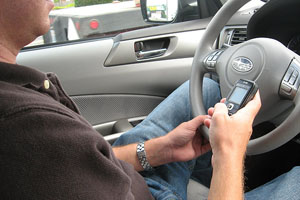 The short answer to the question above is a definitive “no.” With the rise of technology, distracted driving has become a serious problem on US roadways, contributing to nearly 6,000 deaths and 500,000 injuries each year, according to the NHTSA. To solve this problem, many have turned to dangerous distracted driving technologies that make it easier, not harder, to text and talk behind the wheel. Safety advocates and government officials have opposed this tactic, noting that it’s the conversation, not the device, which causes distractions. The best way to avoid distractions is to simply put down the phone while behind the wheel.
The short answer to the question above is a definitive “no.” With the rise of technology, distracted driving has become a serious problem on US roadways, contributing to nearly 6,000 deaths and 500,000 injuries each year, according to the NHTSA. To solve this problem, many have turned to dangerous distracted driving technologies that make it easier, not harder, to text and talk behind the wheel. Safety advocates and government officials have opposed this tactic, noting that it’s the conversation, not the device, which causes distractions. The best way to avoid distractions is to simply put down the phone while behind the wheel.
But a new article by Keith Barry for Wired’s Autopia blog states that distractions might not be the worst thing since drivers are “just as likely to do a bad job driving down some lonely treeless straightaway in Kansas, as you are merging onto the New Jersey Turnpike at rush hour, lost, with a scorpion on your shoulder.” This is an exaggeration of the Yerkes-Dodson law, which predicts that drivers become complacent if they aren’t engaged behind the wheel, and also face danger if they have too many distractions.
Barry is correct that technology has created important safe guards that override the driver if he or she is close to another vehicle, or even stops the car if a pedestrian jumps into the road in front of your car. But I’m concerned that Barry mis-places the complacency concern in stating that a driver free from distractions will pay less attention the road. More realistically, drivers face the danger of becoming too reliant on technology that warns of dangerous road conditions, to a point where they might stop actively looking for that pedestrian who might run out into traffic, thinking their vehicle will take care of it.
Of course, Barry gets this and notes that the technology isn’t yet sufficient to fully protect against dangerous road situations. “Your car can’t tell if you’re tired, daydreaming or listening to a conference call on speakerphone. Therefore, it doesn’t know whether it’s appropriate to engage active safety features,” he writes. “In theory, perfectly programmed fully autonomous cars would be safer than human drivers, but that technology is still years away.”
Since distracted driving technology remains too inconsistent to rely on for auto safety, safety advocates, government officials, and even companies must pick up the slack to develop methods to reduce distractions behind the wheel. In a blog post for his Fastlane blog this week, Secretary of Transportation Ray LaHood applauds Volkswagen and Audi employees for signing a pledge never to text behind the wheel. In order to eliminate distracted driving for good, it is essential to get the automakers and cell phone companies on board as serious economic drivers of change.
Photo credit: mrJasonWeaver

